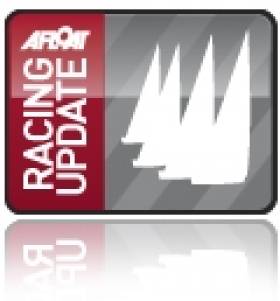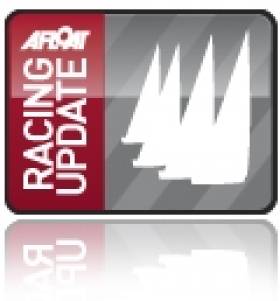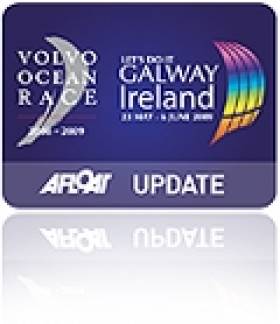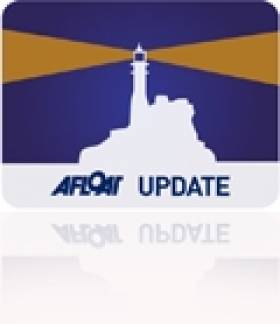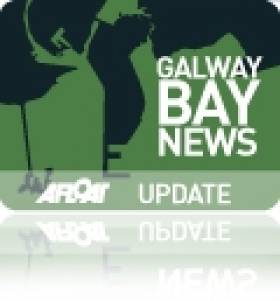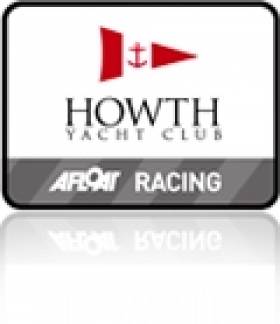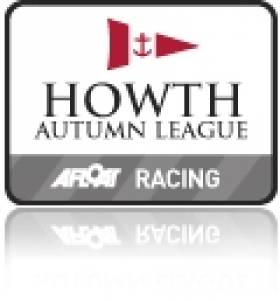Displaying items by tag: race
Transatlantic Race 2011 and Small Cat v Mega Yacht (Video!)
Like any good sailing match race, the second class to depart in the Transatlantic Race 2011 today was a duel of two radicals – this time between a 66ft carbon cat, and a 289ft 3 masted mega yacht. Today size didn't matter and the nimble cat, the Gunboat 66 Phaedo, quickly shot away leaving the Perini Navi, Maltese Falcon, flapping in her tracks.
Irish Skipper Glen Ward Leads Three Peaks Yacht Race
An Irish debutant in the Three Peaks Yacht Race is leading the fleet after four days of competition off the coast of Scotland.
The Barmouth to Fort William Three Peaks Yacht Race combines yachting and mountain running and cycling into one of the greatest adventure challenges in British sport.
Danu Technologies skippered by Glen Ward is staying ahead of White Clouds and then Team Whistler this afternoon after passing the the Sound of Jura, notorious for becalming boats and forcing them to row, and there are several tidal gates ahead for them to negotiate as they make their way through the Inner Hebrides up to Fort William.
Five team members are allowed, comprising a combination of sailors and runners, their aim is to sail from Barmouth, on the Welsh coast, to Fort William in Scotland, via Caernarfon and Whitehaven, climbing the highest peaks in Wales, England and Scotland on the way.
The race is open to mono-hull yachts only and engine power can only be used close to port, but yachts can be rowed, even pulled along by crew members on the shore but cannot have outside assistance. Its a straight race and the first team to get their runners back to the finish line in Fort William, having completed all the mountains, wins the coveted Daily Telegraph Cup.
It is hard to predict but a finish tonight is likely, and with the runners from the leading two evenly matched, there could yet be a repeat of last year when the runners decided the race on the final Ben Nevis run.
Team Danú Technologies from Dublin, is completely new to this event and although they say their main goal is to finish the race, they also say hey will definitely take every opportunity to snatch victory along the way too!
Danú Technologies is skippered by Glen Ward who has more recently been sailing the boat in single-handed offshore races.
Deon McNeilly, Newcastle AC and Gary Bailey, Mourne Runners are the legs of the team. Deon is looking for new challenge having won most mountain running events in Ireland over the years, including the 2010 Mourne 2 day Elite, while Gary has an excellent record in ultra events winning the 2010 26Extreme Ireland Coast to Coast involving 200miles of running, cycling and kayaking
Essentially, it is 'taking part that counts' and exactly what the less active sailing crew will be suggesting to our runners. Andrew Miles from Manchester is the youngest member of the crew whom has been chasing a chance to participate in this race for the last 5 years! A recent graduate who campaigns an 18ft Skiff. John Prudhoe is the fifth Team member and will be responsible for navigation and weather routing.
Danú Technologies is a Ker35 Built in 2001 and was originally designed for the grand prix IRM rule.
Charity Fun Sailing Race at Royal St George
The Royal St George Yacht Club will host its first charity fun sailing race in aid of Our Lady’s Children’s Hospital Crumlin on Friday 22 July.
The race is open to all with a suggested entry feel of €5 for every crew member. Following the action the RSGYC will host an aprés race party for all participants and friends.
And since fun is the aim of the day, there is also a fancy dress option with a prize for the best dressed person!
Entries can be made online at the RSGYC website or alternatively by e-mail to [email protected].
Our Lady's Children’s Hospital Crumlin is an acute paediatric teaching hospital and is Ireland's largest paediatric hospital, being responsible for the provision of the majority of tertiary care services for children and medical research for childhood illnesses in Ireland.
For more than 50 years, Our Lady’s Children’s Hospital have relied on fund raising to help ensure that critically ill and injured children have access to the highest quality care. Contributions are invested in outstanding paediatric care and research to help the nation's sick children and continue to support efforts to ensure healthier children and happier lives.
With only four months to the start of the race, China revealed its first sole entry into the Volvo Ocean Race this morning and also announced an Irish sponsor as part of its first challenge for world sailing honours. Discover Ireland, promoting Irish tourism, is backing the boat as a secondary sponsor. Mike Sanderson, one of the world's leading sailors and past winner of the race, will lead Team Sanya.
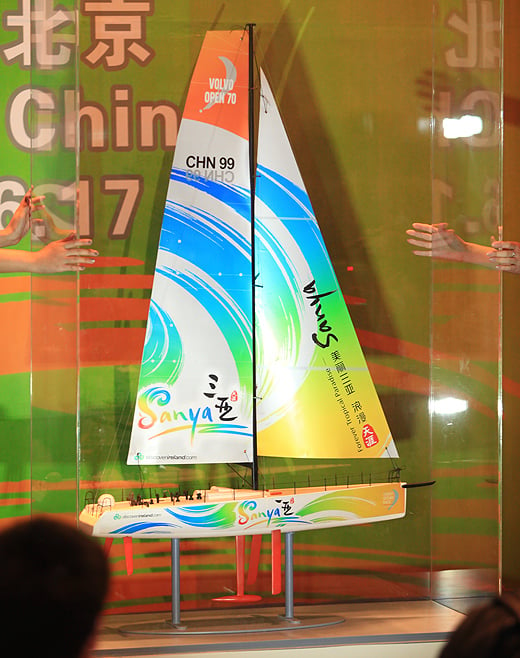
Irish crew will also be on the boat for this episode of the race but those details are under wraps until an Irish launch of the project on July 1, it is understood.
The Chinese entry is the seventh entry in to the race.
The race finishes in Galway in June 2012.
Despite its huge technical and financial resources, the most populous nation on the planet has never won a round-the-globe sailing competition but intends to make the breakthrough, with the recruitment of New Zealander Mike Sanderson as skipper.
Sanderson, 40, is a two-time winner of the Volvo Ocean Race and will chase a hat trick of triumphs with a crew that mixes experienced sailors with relatively raw Chinese members.
Team Sanya is the seventh world-class contender to join this year's race, with Sanderson going head-to-head with some of the sailing's biggest names.
"This is a fantastic opportunity to race under the flag of such a great country and culture," said Sanderson today at the Team Sanya launch in central Beijing.
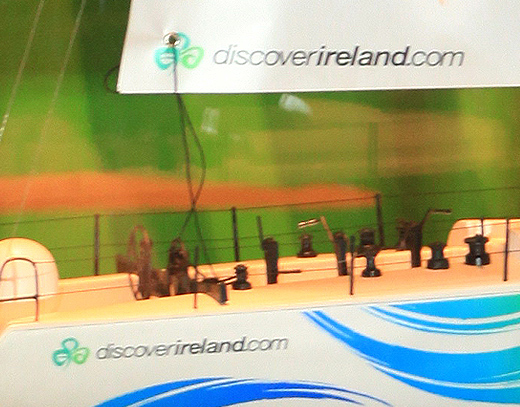
"We are building up a strong team and are ready to take on this exciting challenge. Our approach will be one of compelling intent, working fast and smart, representing this great country and team with ambition, dynamism and colourful energy."
China, as is the case in many sports, has incredible potential within sailing and a win in the Volvo Ocean Race would be a huge boost to its ambitions.
Li Quanhai, Vice Chairman of the China Yacht Association said: "China is a sports power and has abundant marine resources. Our involvement in top sailing events, such as the Olympic Regatta and the Volvo Ocean Race, greatly improves the development of China's water sports.
Knut Frostad, CEO of Volvo Ocean Race said: "We are very excited about the news of Team Sanya and the return of Mike Sanderson, a veteran and true ambassador of the Volvo Ocean Race.
"This will be the seventh entry for the next edition and will not only bring a competitive yacht to our first class field but also will allow China to build on its already large sailing following.
"Team Sanya will allow the Chinese sailing fans to connect with the Volvo Ocean Race again and will be an amazing platform to engage with new audiences and attract potential tourists to Sanya and China itself."
For the Deputy Mayor of Sanya, Wu Yanjun, the city known as the "Hawaii of the Orient" would directly benefit from this opportunity. "Hosting world class events like the Volvo Ocean Race will directly improve our sailing and yachting related facilities."
The stopover will be in Luhuitou Bay, Sanya, where construction is expected to finish in August 2011. When completed, the facility will be a world-class marina.
China was previously represented in the 2008-2009 edition by Green Dragon, a jointly backed venture with Ireland and there will again be an Irish flavour to the Team Sanya challenger with Discover Ireland, promoting Irish tourism, renewing its commitment as a secondary sponsor.
Helly Hansen will be the Official Clothing Partner to the team and the Sanya-based Blue Ocean Protection Association will conduct onboard environmental-protection initiatives while spreading the philosophy of protecting the oceans everywhere throughout the race.
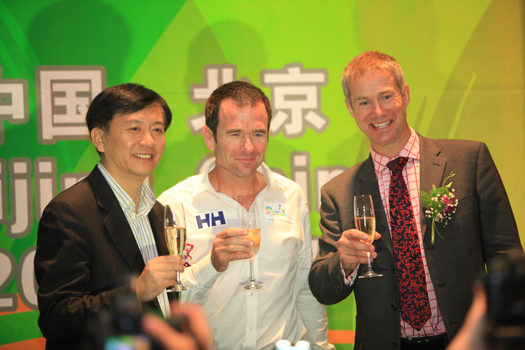
Mr. Jiang Sixian, Vice-governor of Hainan Province and Party Secretary of Sanya City, Mike Sanderson, Skipper of Team Sanya, George Blake, General Manager, Global Promotion for Team Sanya. China launched its first ever sole entry in the Volvo Ocean Race today and announced that one of the world's leading sailors, twice Volvo Ocean Race winner Mike Sanderson from New Zealand, would helm its Team Sanya for the gruelling nine-month, 39,270 mile challenge beginning in October. The Announcement took place at the Park Hyatt, Beijing, China Friday June. 17, 2011.
Fastnet Race Limit Increased
The Rolex Fastnet Race reached its entry limit 10 days after opening and over 130 boats are on the waiting list. "We were staggered at the speed with which people signed up," said RORC Commodore Andrew McIrvine. "We had to do something to satisfy the huge interest, and taking the non IRC yachts out of the total is a fair solution allowing more loyal RORC racers to get their boats into the race."
Removing the non-IRC classes will add about 50 more places to the total. "We are delighted that the Volvo's and IMOCA's want to compete in the race and that the Class 40's are coming en-masse," said RORC Chief Executive, Eddie Warden Owen. "It shows the popularity of the Rolex Fastnet that these professionally sailed boats want to join the race. However without this initiative, they would be taking valuable places away from less experienced offshore racers who view this race as a great personal challenge - their 'Everest' of sailing."
Sutton Harbour increase berthing capacity
To cater for the number of boats arriving in Plymouth, Sutton Harbour Marina has increased the amount of space by making the whole of the berthing area adjacent to West Pier and the Barbican available to the Rolex Fastnet fleet. Sutton Harbour has also become the official berth provider for the race and Chief Executive Nigel Godfroy is pleased to be associated with the race. "Sutton Harbour Marina welcomes the return of this world famous race," said Nigel. "We are very proud of the quality of facilities we have here in Sutton Harbour and being selected as the official berthing provider for the Rolex Fastnet Race. We look forward to welcoming the extra large fleet in August this year."
To accommodate the increased number of entries, space has been booked in Queen Anne's Battery, adjacent to Sutton Harbour and in Plymouth Yacht Haven in the Cattewater, where a water taxi service will be set up to connect competitors with the race office based at Sutton Harbour.
The 2011 Rolex Fastnet Race starts in Cowes, Isle of Wight on Sunday 14 August.
Clipper Race Doc Goes Global on UK television
Six hour-long episodes capture every emotional twist and turn, high and low of the 35,000-mile race, following the participants in the ten-month-long challenge of a lifetime. Many of the crew had never set foot on a boat before beginning their pre-race training. From their first rookie steps to becoming a highly skilled ocean racer, the series charts their progress as they deal with the immense power of the world's oceans and everything Mother Nature can throw at them.
Dramatic footage captures a man overboard in the middle of the south Atlantic, dismastings, the devastating loss of a yacht and the terrifying experience of a yacht being rolled in the near hurricane conditions in the remote waters of the north Pacific. These heart-stopping scenes combine with the euphoria of race victories, personal voyages of discovery and the cementing of friendships that will last a lifetime.
As the race draws to its final, nail-biting conclusion and the emotional homecoming to a hero's welcome, Against the Tide captures the reactions of the racers after the event, to discover exactly how this unforgettable experience has changed their lives forever.
The international TV series, created by an award winning UK production team, is being snapped up by broadcasters around the world, including the Discovery Channel. The programmes will premiere on Discovery's UK free-to-air channel QUEST in a peak mid-week slot from next Wednesday, 2 March at 9pm.
TV series Producer John Nolan says, "The Clipper Race is a remarkable human adventure played out on the high seas. Our team had unrestricted access to the crews to follow their incredible journey around the world. The series provides a unique insight into the roller coaster of emotions and experiences as novice sailors from all walks of life discover how they cope when Mother Nature throws everything she's got at them.
"We're delighted with the programmes and have received an enthusiastic reception from broadcasters such as Discovery Channel. It will be seen by millions of viewers around the world."
The biennial race was established in 1996 by legendary yachtsman Sir Robin Knox-Johnston, who became the first person to sail solo, non-stop, around the world more than 40 years ago. He is chairman of the race which is almost full for the next event starting this summer and is already signing up crew for 2013.
Sir Robin says, "There is huge demand for this unique adventure which gives people of all ages and walks of life the opportunity to experience the thrill of ocean racing, Clipper provides extensive training and safety is our number one priority. So when our crews and their professional skippers encounter the dramatic challenges of the world's oceans, they can call upon their training and numerous safety drills to respond quickly and effectively. Taking part in the Clipper Round the World Yacht Race is a great personal achievement of which they can be justly proud and the television series captures it perfectly."
Watch Against the Tide on QUEST (Freeview channel 38, Sky channel 154, BT Vision channel 38, Virgin Media channel 179) from Wednesday 2 March at 2100 GMT.
The series has been produced by North One Television, one of Europe's biggest and most successful independent media companies. It is recognised as a global producer of world class entertainment, factual, digital, sport and live event programming and has won scores of awards for its shows. It is part of the ALL3MEDIA group. www.northonetv.com
New Ocean Centre to Open in Galway
The centre will provide facilities for all the watersports organisations in the city and region and is located in the new Galway Harbour Enterprise Park adjacent to the new harbour slipway that was built specifically for the Volvo Ocean Race in 2009. The 25,000 sq ft premises is being provided by Cold Chon (Galway) Ltd for a nominal rent and the land is being provided free by Galway Harbour Company.
Some of the clubs that have already committed to this new facility include the Galway Sea Scouts, Galway Sea Sports Association, Galway Sub Aqua Club, Bádoiri an Cladaigh, OYTI, Galway Coastal Rowing, Kayak Mor and Galway Bay Sailing Club.
'The Harbour Company is pleased to assist in pulling together the various water sport bodies under one roof and in the heart of the harbour. The new facility and the recently constructed slipway will be the focal point for Galway's marine leisure, getting Galwegians afloat and established in the city, commented Harbour Master', Captain Brian Sheridan.
The Centre is also hosting Let's Do It Global which ran the very successful Green Dragon campaign and the Galway Volvo Ocean Race Festival. The team is now working towards hosting a spectacular finish to the Volvo Ocean Race 2011-12 in July 2012.
The centre will provide operational facilities such as offices, changing rooms and storage facilities. There will be no social amenities or bars at the centre however it is anticipated that the establishment of the centre will provide impetus for attracting further watersport events to Galway.
The launch will take place at The Galway Ocean Sports Centre, Galway Harbour Enterprise Park, Galway City.
Dolan Beats McMahon in Howth Yacht Club Laser Race
Papillon First Home in Howth Brass Monkey Race
2011 ISORA Race Schedule Published
ISORA has published its race schedule for 2011 and to win the overall series next year boats must complete 4 of the 6 "qualifying". Points for the overall series will then be taken from the Best 5 results from ALL the races completed.
The offshore body has also changed the scoring of each race to the High Score system and it will apply weightings for those qualifying races depending on the complexity of the race. The aim is to better reward the winner and participants of longer races with bigger fleets.
To provide opportunities for those boats who have not been winning to win prizes and trophies, it was also agreed at last weeks agm to create a "Silver" fleet in both Class 1 and Class 2. The selection of boats to enter the "Silver" fleet for 2011 will be based on their performance in 2010. The success of these new classes will depend on maintaining the number of boats entering and racing at least at last years numbers.
The NOR and Entry forms for ISORA 2011 will be published later this month.
The Race Programme is attached for download below.


























